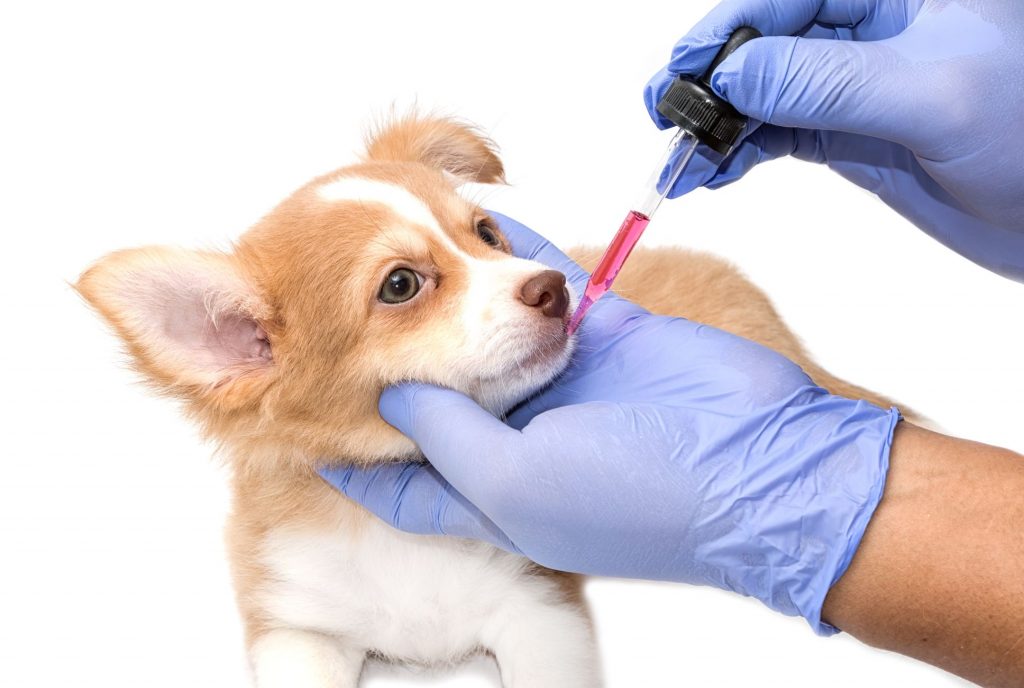
Top 5 Tips For Giving Your Pet Their Medication

The monthly flea, tick, and heartworm medications don’t go down as easily as you’d think. Pet pharmaceuticals are designed, when possible, for easy delivery. But your pets know there’s something wrong with what you’re offering, and they will put up a fight against consumption! Our pets love treats, but they can smell and taste flavored medication before it’s out of the bottle or tube.
The Top Two Tips For Administering Pet Meds At Home
1. Think before you act: is the number one tip to keeping yourself out of harm’s way when giving medicine to your pets. Cats scratch, bite, and squirm with all their strength to get away from whatever it is you’re trying to give them. They’re used to food in a dish, so it’s easy to tell that there’s something off when you try to force open their jaws! Dogs will not open their mouths for pills. They don’t need language to tell you, “I refuse to eat that!”
2. Be prepared: is the second tip toward success in administering pet medications. Whatever the medication, if it has to go down your pet’s throat, preparation is essential. You may get it in, but they’ll be faster to spit it out. Have someone ready to help you hold your furry friends just in case they try to run.
Liquids, Pills, and Shots, Oh My.
Your pet is sick or needs flea, tick, and heartworm medications every month. You have your veterinarian-recommended treatment ready to go. Your pet is suspicious. How they know what’s coming is unknown, but they do, and their jaws are set. Here’s how to make sure your pets take various types of medications:
Liquids
Wrap a resistant cat in a heavy towel to prevent scratches. Keep their heads facing away from the dropper or syringe that came with the liquid medication. Slowly administer the liquid through the side of your cat’s mouth. Don’t let them loose until you know they’ve swallowed the dose.
For dogs, simply mix the medication thoroughly with some food or treat they love. Feed the concoction in their food bowl.
Pills
Hopefully, your pets will accept a pill mixed in with a little meat or fish-flavored food. It’s important to make sure they swallowed the dose and did not spit out the pill.
If they won’t willingly take the pill, try wrapping it in a smelly but tasty, doughy product designed to trick them.
If you want to give your cat or dog a pill without food, try coating the pill with a healthy oil or butter or other fat to make it easier for swallowing. If you have to administer the pill by hand, get help to hold the animal so you don’t get bitten!
Shots
Subcutaneous (under the skin) shots can be administered at home with veterinarian approval. Follow instructions to the letter and be sure the medication is not expired and has been kept at the correct temperature to keep it viable.
Ask your veterinarian to demonstrate how to administer a subcutaneous injection.
We’re Here To Help You And Your Pets
Regular wellness checks are the key component to helping your pets live healthy lives. Early detection and treatment of disease is the best for good outcomes. When you must administer medications at home, we are happy to consult with you on tried-and-true methods of delivery. Contact us with questions and to help at (703) 920-5300.
Contact Us!
2301 Columbia Pike #G-1, Arlington, VA 22204
Phone: (703) 920-5300
Fax: (703) 685-8860
Email: info@myarlingtonvet.com
Office Hours
-
Monday
8 a.m. – 8 p.m.
-
Tuesday
8 a.m. – 8 p.m.
-
Wednesday
8 a.m. – 6 p.m.
-
Thursday
8 a.m. – 6 p.m.
-
Friday
8 a.m. – 6 p.m.
-
Saturday
8 a.m. – 2 p.m.
-
Sunday
CLOSED
- Doctors’ hours are by appointment only.



